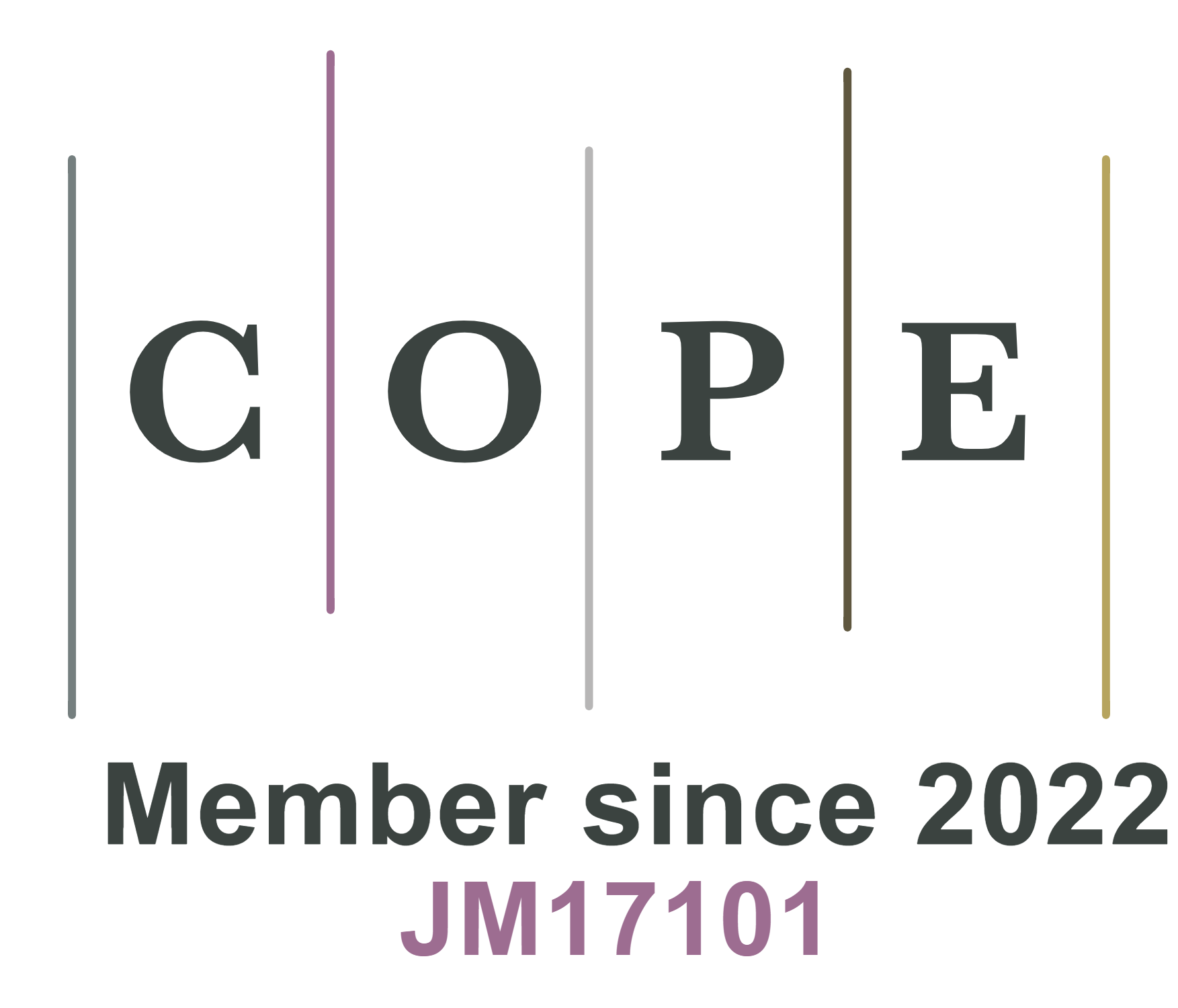Conjugated polyimides modified self-supported carbon electrodes for electrochemical conversion of CO2 to CO
Abstract
The electrochemical reduction of carbon dioxide (CO2RR) offers a promising approach to address the dual challenges of energy scarcity and environmental degradation. This study presents a new, cost-effective, and scalable electrocatalyst: self-supporting carbon paper modified with porous conjugated polyimides. This innovative material facilitates efficient CO2 conversion in aqueous media, eliminating the need for a pyrolysis step. The electrocatalyst’s design utilizes a non-metallic organic polymer with a high density of nitrogen atoms, serving as active sites for catalysis. Its unique mesoporous microsphere structure comprises randomly stacked nanosheets that are generated in situ and aligned along the carbon fibers of carbon paper substrate. This architecture enhances both CO2 adsorption and ensures proper electron transportation, facilitated by the conjugated structure of the polymer. Additionally, the inherent hydrophobicity of conjugated polyimides contributes to its robust catalytic performance in selectively reducing CO2, yielding CO as the primary gaseous product with up to 88.7% Faradaic efficiency and 82.0 mmol g-1 h-1 yield rate. Therefore, the proposed electrocatalyst provides a sustainable solution for electrochemical CO2RR catalyzed by non-metal organic materials, combining high efficiency with the advantages of a simple preparation process and the absence of costly materials or steps. This research contributes to the advancement of CO2RR technologies, potentially leading to more environmentally friendly and energy-efficient solutions.
Keywords
INTRODUCTION
The escalating global challenge of carbon emissions is a pressing issue as the world endeavors sustainable solutions to mitigate the impacts of climate change[1]. The significant amounts of carbon dioxide (CO2) emitted into the atmosphere from human activities pose both an environmental crisis and an underutilized resource[2]. Among the strategies to address this issue, converting CO2 into valuable chemicals and fuels has emerged as a promising approach not only to reduce greenhouse gas emissions but also to establish a new carbon-neutral economy[3-5]. The electrochemical reduction of CO2 (CO2RR) is one of the most effective methods for this conversion, providing a direct and energy-efficient approach to transforming CO2 into various value-added products, including carbon monoxide (CO), a crucial industrial feedstock[6,7]. The electrochemical CO2RR holds the potential to offer a dual solution: mitigating carbon emissions by converting excess CO2 into valuable products and storing energy from renewable sources, such as solar and wind, in chemical bonds[8,9]. However, the full potential of this technology can only be realized through significant improvements in selectivity towards specific products, particularly CO. This is because CO serves as a valuable precursor in the synthesis of various chemicals and can act as a building block for the production of synthetic molecules, establishing a direct connection between renewable energy sources and the chemical industry[10-12].
The pursuit of efficient CO2 electroreduction hinges on the selection of appropriate electrocatalysts. Among these, precious metals have long been esteemed for their exceptional selectivity and reactivity[13,14]. However, their widespread utilization is hampered by their prohibitive costs and susceptibility to poisoning. This limitation has prompted researchers to explore alternative options, with non-precious metals emerging as more economically viable alternatives. In this regard, transition metal-based nano materials[15-17] and main group metals[18,19] have drawn widespread attention for CO2RR. Among them, the first-row transition metal-containing and easily available systems toward CO2-to-CO conversion are very promising for the industrial application due to their low cost and high activity[20-22]. Additionally, the emergence of metal-free carbonaceous materials, such as porous carbon, graphene, carbon nanotubes, and carbon quantum dots, also offers a promising avenue for CO2 electroreduction[23-26]. These materials boast both cost-effectiveness and durability, representing a compelling alternative to traditional metal catalysts. Among these, the nitrogen-doped carbon materials presented their robust and effective catalytic performance for the generation of syngas with various ratios[27]. Additionally, other non-metal atom-doped carbons, such as sulfur[28], phosphorous[29], boron[30], and selenium[31,32], also exhibited considerable ability in electrochemical conversion of CO2. However, challenges remain, particularly in ensuring consistent active site distribution, a concern stemming from the pyrolysis process used in their synthesis.
Conjugated polyimides (CPIs) represent a novel class of electrocatalysts distinguished by their tunable electronic properties, which can be precisely modified through chemical alterations[33-35]. They also exhibit inherent stability, surpassing many traditional electrocatalysts[36,37]. These polymers demonstrate remarkable flexibility in morphological control at the nanoscale, thereby enhancing surface area and porosity to facilitate abundant active sites and enhance mass transport[38,39]. Their intrinsic redox activity and mechanical strength support efficient electron transfer and eliminate the need for binders or substrates, respectively. Additionally, CPIs offer a cost-effective alternative to metal catalysts. They can be synthesized to target specific applications, rendering them compatible with various electrolytes for a broad range of electrochemical devices[34,35]. These attributes position CPIs as a promising material for the selective and sustainable conversion of CO2 to CO. Han et al. developed a series of 2D covalent organic frameworks with cobalt(II)-phthalocyanine sites (CoPc-PI-COFs) as electrocatalysts for efficient CO2RR, yielding CO products with up to 97% Faradaic efficiency (FE) at -0.8 V vs. RHE (Reversible Hydrogen Electrode) with 21.1 mA partial current density[40]. Subsequently, they further developed several 3D CoPc-PI-COFs for electrocatalytic conversion of CO2 to CO[41]. The 3D porous structure increased the exposure of active electrocatalytic sites, resulting in enhanced current density for the production of CO with up to 96% FE at
With our continuous interest in electrocatalysis[42,43]. Herein, a metal-free self-supported carbon paper (CP)-based CPI organic heterogeneous catalyst, denoted as CPI/CP, was developed for effective electrochemical CO2RR. Compared to CPI powders, the in situ polymerized CPI on the fibers of CP exhibited microspheres without active exceeded amino groups. Characterization and electrochemical studies showed that the microspherical morphology and thin-layered CPI nanosheets provided broadened conjugated structure and intrinsic hydrophobicity for facilitating the electron transfer and suppressing the hydrogen evolution reaction (HER) process at the same time. The triazine ring and imide group were demonstrated as the active sites for the adsorption and activation of CO2, promoting the efficiency and selectivity for the CO production.
EXPERIMENTAL
Synthesis of conjugated polyimide (CPI) powder
The CPI powder was synthesized following the literature procedure[44] with slight modification, and denoted as CPI-A. First, 1,2,4,5-Benzenetetracarboxylic anhydride (PMDA, 981.5 mg, 4.5 mmol) and H2O (162 μL) were added into 1-methayl-2-pyrrolidinone (NMP, 20 mL) in an autoclave. Then, melamine (MA,
Synthesis of self-supported CPI/CP
The CPI/CP was fabricated following a procedure similar to the synthesis of CPI-A. At first, the CP
Synthesis of CPI powder in sealed tubes
The CPI powder synthesis was performed in a vacuum-sealed Pyrex tube, denoted as CPI-S. Initially,
The additional detailed experimental data, such as reagents, characterizations, and electrochemical measurements, are provided in the Supplementary Materials.
RESULTS AND DISCUSSION
Synthesis and characterization of catalysts
Scheme 1 illustrates the systematic procedure for preparing self-supported CPIs on CP substrate (CPI/CP). The CPI/CP composite was synthesized via solvothermal synthesis of CPI with PMDA and MA at 210 °C with pre-treated CPs additionally placed in the autoclave. Upon visual inspection of the fabricated CPI-CP, the surface color transitioned from dark grey to a bit yellowish, indicating the successful CPI growth on the CP surface. For a comprehensive investigation of CPI materials, CPI powders were also prepared via solvothermal condition in an autoclave (CPI-A) and a vacuumed sealed tube (CPI-S) without any heterogeneous substrate. Subsequently, the CPI-A and CPI-S powders were introduced onto the CP with the aid of Nafion solutions. All the three fabricated working electrodes were directly used in the following electrolysis after activation without any other operations.
The surface morphologies of these materials were investigated using scanning electron microscopy (SEM), atomic force microscopy (AFM), and transmission electron microscopy (TEM). SEM images clearly depicted the formation of CPI microspheres with diameters ranging from 2-10 µm, adhering to the fibers of CP [Figure 1A]. Additionally, as illustrated in Figure 1B, regular microspheres were constructed from CPI nanosheets, exhibiting solid structures with irregular stacking. Transverse surface and partially enlarged images are presented as Figure 1C and D, revealing CPI nanosheets stacked randomly with rough boundaries. SEM images labeled CPI-A and CPI-S are presented Figure 1E and F, respectively. A mixture of microspheres and microsheets is observed in the CPI-A sample, indicating shape transformation during the solvothermal process. Conversely, microsheets with smooth boundaries were the predominant morphology observed in the CPI-S sample. Moreover, TEM images of CPI dispersed ultrasonically in CPI-A [Figure 1G] and exfoliated from CPI/CP [Figure 1H] reveal the 2D nanoscale structure of CPI sheets, potentially enhancing electrical conductivity[45]. AFM images also revealed the micrometer-scale dimensions of CP microspheres [Figure 1I and J]. As shown in Figure 1K, energy dispersive X-ray spectroscopy (EDS) mapping images confirmed the even distribution of each element, indicating the construction of CPI through covalent bonding of organic substrates.
Figure 1. SEM images of (A-D) CPI/CP, (E) CPI-A, and (F) CPI-S. TEM images of (G) CPI-A and (H) CPI/CP. (I) AFM measurements of CPI/CP. (J) Corresponding height curves for the selective areas in (I). (K) EDS mapping image of CPI/CP.
To obtain more detailed information on the structure and composition of CPI materials, additional characterization techniques were employed. In the Fourier transform infrared spectroscopy (FT-IR) spectrum comparison, the characteristic peaks around 1,362, 1,785, and 3,400 cm-1 corresponded to the stretching vibrations of C-N-C, C=O, and N-H bonds, respectively [Figure 2A][46]. Noticeable N-H stretching bands were observed in the spectra of CPI-A and CPI-S, suggesting the presence of MA or its oligomers in these structures. Furthermore, the ultraviolet-visible (UV-Vis) diffuse reflectance spectra (DRS) showed that CPI-A and CPI-S shared similar absorption peaks with PMDA, albeit with a slight red shift, whereas CPI/CP exhibited a broad absorption spectrum [Figure 2B]. This confirmed the enhanced conjugated structure of CPI/CP, potentially facilitating rapid electron transport. Moreover, the X-ray diffraction (XRD) patterns of these materials revealed a more ordered structure for CPI/CP, characterized by fewer peaks between 10°-35° compared to CPI-A and CPI-S [Supplementary Figure 1][47]. Additionally, the peaks at 167.29, 157.02, 137.34, and 120.08 ppm in the cross-polarization magic angle spinning nuclear magnetic resonance (CP MAS NMR) spectrum can be attributed to hydrogen bonded benzylic, imide bonded benzylic, carbonyl, and triazine carbons in the CPI structure [Figure 2C]. Meanwhile, the X-ray photoelectron spectroscopy (XPS) demonstrated the absence of metal elements within the CPI material, consistent with the findings of EDS mapping[46]. In the full spectrum, the peaks centered at 286.6, 399.4, and 531.0 eV were attributed to C 1s, N 1s, and O 1s, respectively [Figure 2D]. In the C 1s spectrum, the
Figure 2. (A) FT-IR and (B) solid-state UV-Vis DRS spectra of CPI/CP, CPI-A, CPI-S and raw materials. (C) CP MAS NMR spectrum of CPI exfoliated from CPI/CP. (D) XPS spectra of CPI/CP. (E) C 1s, (F) N 1s, and (G) O 1s XPS spectra of CPI/CP. N2 adsorption-desorption isotherms and pore size distribution of (H) CPI-S and (I) CPI/CP.
Electrochemical CO2RR performance
Electrolysis was performed in a H-cell equipped with three electrodes: the fabricated working electrode, a Pt foil counter electrode, and an Ag/AgCl reference electrode. The catalytic activities of CO2RR were initially assessed by comparing linear sweep voltammetry (LSV) measurements in an Ar/CO2 saturated
Figure 3. Electrochemical CO2RR performance of CPI/CP, CPI-A, CPI-S. (A) LSV curves in a CO2-saturated 0.5 M KHCO3 electrolyte. (B) FECO. (C) CO yield rates. (D) FECO with various counter electrodes. (E) FECO with various electrolysis media. (F) Cdl. (G) Stability test of CPI/CP at -0.65 V vs. RHE for 24 h. (H) FECO comparison of non-metal electrocatalysts.
Subsequent experiments were conducted using various counter electrodes to demonstrate the active role of Pt in the electrochemical CO2RR process[49]. As depicted in Figure 3D, neither the blank CP nor the graphite counter electrodes provided significant enhancement for CO production, likely due to their inherent inertness to the oxygen evolution reaction, which offers minimal promotion of the reduction overpotential
To further assess the stability of polymer catalysts, we characterized catalysts after extended electrolysis and compared them with unexposed catalysts. The SEM image shows that the microspheres on the CP electrode surface almost disappeared compared to the fresh fabricated and activated ones [Figure 4A]. Furthermore, contact angle measurements of water droplets on CPI/CP before and after long-term electrolysis in aqueous solution were conducted, yielding values of 122.1° and 79.0°, respectively, indicating a change in hydrophobicity during the electrocatalytic process [Figure 4B]. Despite some catalyst detachment during the process, the TEM image of CPI nanosheets was still observable post-reaction, suggesting that the structural integrity of the catalyst was largely maintained [Supplementary Figure 10]. Additionally, the charge transfer resistance (Rct) of CPI/CP was examined using electrochemical impedance spectroscopy (EIS) [Figure 4C]. Nyquist plots indicate that CPI/CP is controlled by both charge transfer and substance diffusion during electrochemical CO2RR processes, where electrochemical polarization coexists with concentration polarization. After the electrolysis, the Rct of CPI/CP reduced from 11.12 to 2.76, inferring swift electron transport on the catalyst compared to that before electrolysis. The increased slope (from 2.88 to 3.11) at the low frequency zone indicates the faster mass transport for the catalyst after the electrolysis. Considering the catalytic performance and the characterization of the CPI/CP before and after electrolysis, such a transformation of the catalyst occurring can be ascribed to the disappearance of the mesosphere morphology. Such rearrangement of the catalyst surface facilitates the electron transfer, mass transport, and hydrophilicity of the surface, which attenuates the selectivity for CO2 conversion by emerging HER.
Theoretical calculations
Density Functional Theory (DFT) calculations were employed to gain insights into the catalytic mechanism of CPI structure. The free energy diagrams for the CO2RR demonstrate that CO2 molecules are easily adsorbed onto the catalyst surface, a process that is enhanced by the activated CPI structure [Figure 4D]. The activation of adsorbed CO2 to form *COOH is identified as the potential rate-determining step on CPI, with a relatively low energy barrier that implies fast reaction dynamics for CPI unit. Furthermore, the lower energy required to generate the intermediate *CO and the final product CO underscores the thermodynamic favorability of CO2RR on CPI structure. The DFT analysis also suggests that the active sites on CPI play a crucial role in lowering the activation energy for CO2 conversion, thereby facilitating the
CONCLUSIONS
In summary, a self-supported composite of CPI/CP was synthesized via a straightforward, pyrolysis-free process, which effectively and selectively facilitated the electrochemical reduction of CO2 to CO. After thorough comparison and extensive characterization of various synthetic methods, it was found that CPI-S exhibited a more regular structure, characterized by a 2D nanosheet morphology with layers that aggregate in a layer-by-layer fashion, and a larger surface area. In contrast, CPI/CP, which featured a microspherical morphology with randomly stacked CPI nanosheets, significantly outperformed CPI-A and CPI-S in terms of activity and selectivity for CO2RR. This was evidenced by a maximum FECO of 88.6 % and a CO yield rate reached 82.0 mmol g-1 h-1 at an applied potential of -0.65 V vs. RHE. Despite a reduction in surface area and moderate ECSA compared to CPI-S, the enhanced conjugated properties of CPI/CP specifically preserved the electron transfer capability. Additionally, the sufficient hydrophobicity of the material effectively mitigated the HER process. This study presents a novel strategy for the design of cost-efficient and eco-friendly benign non-metal electrocatalysts, aimed at the efficient production of CO via the electrochemical CO2RR.
DECLARATIONS
Acknowledgments
The authors thank Shiyanjia Lab (www.shiyanjia.com) for support of the BET, XPS, and CP MAS NMR tests.
Authors’ contributions
Conceived the research and designed the experiments: Feng D, Huang P
Prepared the conjugated polyimides and catalysts, carried out the electrochemical testing: Li Z, Guo H
Completed the manuscript: Feng D, Sun X, Li Z
Discussed and revised the manuscript: Feng D, Sun X, Sun Y, Li H, Ma T
Availability of data and materials
The details of materials and reagents, instrumentation and characterizations, and electrochemical measurements were shown in the Supplementary Materials.
Financial support and sponsorship
This work was supported by the National Natural Science Foundation of China (Nos. 52071171, 52202248), Key Research Project of the Department of Education of Liaoning Province (LJKZZ20220015), Australian Research Council (ARC) through Future Fellowship (FT210100298), Discovery Project (DP220100603) and Linkage Project (LP210200504, LP220100088) schemes, the Australian Government through the Cooperative Research Centres Projects (CRCPXIII000077), the Australian Renewable Energy Agency (ARENA) as part of ARENA’s Transformative Research Accelerating Commercialisation Program (TM021), and Natural Science Foundation of Liaoning Province (general program) (2020-MS-137).
Conflicts of interest
All authors declared that there are no conflicts of interest.
Ethical approval and consent to participate
Not applicable.
Consent for publication
Not applicable.
Copyright
© The Author(s) 2024.
Supplementary Materials
REFERENCES
1. Seddon N. Harnessing the potential of nature-based solutions for mitigating and adapting to climate change. Science 2022;376:1410-6.
2. Wang W, Zeng C, Tsubaki N. Recent advancements and perspectives of the CO2 hydrogenation reaction. Green Carbon 2023;1:133-45.
3. Hepburn C, Adlen E, Beddington J, et al. The technological and economic prospects for CO2 utilization and removal. Nature 2019;575:87-97.
4. Kamkeng ADN, Wang M, Hu J, Du W, Qian F. Transformation technologies for CO2 utilisation: current status, challenges and future prospects. Chem Eng J 2021;409:128138.
5. Mao J, Wang Y, Zhang B, et al. Advances in electrocarboxylation reactions with CO2. Green Carbon 2024;2:45-56.
6. Li C, Ji Y, Wang Y, et al. Applications of metal-organic frameworks and their derivatives in electrochemical CO2 reduction. Nanomicro Lett 2023;15:113.
7. Younus HA, Ahmad N, Ni W, et al. Molecular catalysts for CO2 electroreduction: progress and prospects with pincer type complexes. Coord Chem Rev 2023;493:215318.
8. Wang D, Mao J, Zhang C, et al. Modulating microenvironments to enhance CO2 electroreduction performance. eScience 2023;3:100119.
9. Song D, Lian Y, Wang M, et al. Electrochemical CO2 reduction catalyzed by organic/inorganic hybrids. eScience 2023;3:100097.
11. Carrilho RMB, Calvete MJF, Mikle G, Kollár L, Pereira MM. Carbon monoxide as C1 building block in fine chemical synthesis. Chin J Chem 2024;42:199-221.
12. Wu X, Lang J, Sun Z, Jin F, Hu YH. Photocatalytic conversion of carbon monoxide: from pollutant removal to fuel production. Appl Catal B Environ 2021;295:120312.
13. Gao D, Zhou H, Cai F, Wang J, Wang G, Bao X. Pd-containing nanostructures for electrochemical CO2 reduction reaction. ACS Catal 2018;8:1510-9.
14. Tan X, Yu C, Song X, et al. Robust O-Pd-Cl catalyst-electrolyte interfaces enhance CO tolerance of Pd/C catalyst for stable CO2 electroreduction. Nano Energy 2022;104:107957.
15. Li J, Zhang B, Dong B, Feng L. MOF-derived transition metal-based catalysts for the electrochemical reduction of CO2 to CO: a mini review. Chem Commun 2023;59:3523-35.
16. Bikbaeva V, Nesterenko N, García-moncada N, Valtchev V. Co-promoted Mo-carbide catalytic system for sustainable manufacturing of chemicals via co-processing of CO2 with ethane. Green Carbon 2023;1:94-103.
17. Li H, Gan K, Li R, et al. Highly dispersed NiO clusters induced electron delocalization of Ni-N-C catalysts for enhanced CO2 electroreduction. Adv Funct Mater 2023;33:2208622.
18. Mao Y, Jiang Y, Gou Q, et al. Indium-activated bismuth-based catalysts for efficient electrocatalytic synthesis of urea. Appl Catal B Environ 2024;340:123189.
19. Deng C, Qi C, Wu X, Jing G, Zhao H. Unveiling the relationship between structural evaluation and catalytic performance of InOOH during electroreduction of CO2 to formate. Green Carbon 2024;2:124-30.
20. Liang S, Huang L, Gao Y, Wang Q, Liu B. Electrochemical reduction of CO2 to CO over transition metal/N-doped carbon catalysts: the active sites and reaction mechanism. Adv Sci 2021;8:e2102886.
21. Jia C, Ching K, Kumar PV, et al. Vitamin B12 on graphene for highly efficient CO2 electroreduction. ACS Appl Mater Interfaces 2020;12:41288-93.
22. Wang SM, Yuan X, Zhou S, et al. Single-atomic-Ni electrocatalyst derived from phthalocyanine-modified MOF for convoying CO2 intelligent utilization. Energy Mater 2024;4:400032.
23. Zhang Z, Yu L, Tu Y, et al. Unveiling the active site of metal-free nitrogen-doped carbon for electrocatalytic carbon dioxide reduction. Cell Rep Phys Sci 2020;1:100145.
24. Zhang W, Jia B, Liu X, Ma T. Surface and interface chemistry in metal-free electrocatalysts for electrochemical CO2 reduction. SmartMat 2022;3:5-34.
25. Yadav RM, Li Z, Zhang T, et al. Amine-functionalized carbon nanodot electrocatalysts converting carbon dioxide to methane. Adv Mater 2022;34:e2105690.
26. Dong Y, Zhang Q, Tian Z, et al. Ammonia thermal treatment toward topological defects in porous carbon for enhanced carbon dioxide electroreduction. Adv Mater 2020;32:e2001300.
27. Li J, Zan WY, Kang H, et al. Graphitic-N highly doped graphene-like carbon: a superior metal-free catalyst for efficient reduction of CO2. Appl Catal B Environ 2021;298:120510.
28. Li R, Liu F, Zhang Y, Guo M, Liu D. Nitrogen, sulfur co-doped hierarchically porous carbon as a metal-free electrocatalyst for oxygen reduction and carbon dioxide reduction reaction. ACS Appl Mater Interfaces 2020;12:44578-87.
29. Yang F, Liang C, Yu H, et al. Phosphorus-doped graphene aerogel as self-supported electrocatalyst for CO2-to-ethanol conversion. Adv Sci 2022;9:e2202006.
30. Sreekanth N, Nazrulla MA, Vineesh TV, Sailaja K, Phani KL. Metal-free boron-doped graphene for selective electroreduction of carbon dioxide to formic acid/formate. Chem Commun 2015;51:16061-4.
31. Zhang B, Zhang J, Zhang F, et al. Selenium-doped hierarchically porous carbon nanosheets as an efficient metal-free electrocatalyst for CO2 reduction. Adv Funct Mater 2020;30:1906194.
32. Sun Y, Zhao K, Deng X, Zhang M, Wang X, Wang W. Metal-free Se-based tetra-doped carbon catalyst for high-selective electro-reduction of CO2 into CO. J Environ Chem Eng 2023;11:110435.
33. Fu GE, Yang H, Zhao W, Samorì P, Zhang T. 2D conjugated polymer thin films for organic electronics: opportunities and challenges. Adv Mater 2024;29:e2311541.
34. Yao L, Ma C, Sun L, et al. Highly crystalline polyimide covalent organic framework as dual-active-center cathode for high-performance lithium-ion batteries. J Am Chem Soc 2022;144:23534-42.
35. Gu S, Hao R, Chen J, et al. A star-shaped polyimide covalent organic framework for high-voltage lithium-ion batteries. Mater Chem Front 2022;6:2545-50.
36. Wang J, Liu H, Du C, et al. Conjugated diketone-linked polyimide cathode material for organic lithium-ion batteries. Chem Eng J 2022;444:136598.
37. Wang Y, Liu Z, Wang C, et al. π-conjugated polyimide-based organic cathodes with extremely-long cycling life for rechargeable magnesium batteries. Energy Stor Mater 2020;26:494-502.
38. Fang Q, Zhuang Z, Gu S, et al. Designed synthesis of large-pore crystalline polyimide covalent organic frameworks. Nat Commun 2014;5:4503.
39. Zhang Y, Huang Z, Ruan B, et al. Design and synthesis of polyimide covalent organic frameworks. Macromol Rapid Commun 2020;41:e2000402.
40. Han B, Ding X, Yu B, et al. Two-dimensional covalent organic frameworks with Cobalt(II)-Phthalocyanine sites for efficient electrocatalytic carbon dioxide reduction. J Am Chem Soc 2021;143:7104-13.
41. Han B, Jin Y, Chen B, et al. Maximizing electroactive sites in a three-dimensional covalent organic framework for significantly improved carbon dioxide reduction electrocatalysis. Angew Chem Int Ed 2022;61:e202114244.
42. Feng DM, Zhu YP, Chen P, Ma TY. Recent advances in transition-metal-mediated electrocatalytic CO2 reduction: from homogeneous to heterogeneous systems. Catalysts 2017;7:373.
43. Feng D, Zhou L, White TJ, Cheetham AK, Ma T, Wei F. Nanoengineering metal-organic frameworks and derivatives for electrosynthesis of ammonia. Nanomicro Lett 2023;15:203.
44. Duan H, Li K, Xie M, et al. Scalable synthesis of ultrathin polyimide covalent organic framework nanosheets for high-performance lithium-sulfur batteries. J Am Chem Soc 2021;143:19446-53.
45. Hiragond C, Kim H, Lee J, Sorcar S, Erkey C, In S. Electrochemical CO2 reduction to CO catalyzed by 2D nanostructures. Catalysts 2020;10:98.
46. Wang T, Xue R, Chen H, et al. Preparation of two new polyimide bond linked porous covalent organic frameworks and their fluorescence sensing application for sensitive and selective determination of Fe3+. New J Chem 2017;41:14272-8.
47. Han Y, Zhang M, Zhang YQ, Zhang ZH. Copper immobilized at a covalent organic framework: an efficient and recyclable heterogeneous catalyst for the Chan-Lam coupling reaction of aryl boronic acids and amines. Green Chem 2018;20:4891-900.
48. Liebl MR, Senker J. Microporous functionalized triazine-based polyimides with high CO2 capture capacity. Chem Mater 2013;25:970-80.
Cite This Article
How to Cite
Download Citation
Export Citation File:
Type of Import
Tips on Downloading Citation
Citation Manager File Format
Type of Import
Direct Import: When the Direct Import option is selected (the default state), a dialogue box will give you the option to Save or Open the downloaded citation data. Choosing Open will either launch your citation manager or give you a choice of applications with which to use the metadata. The Save option saves the file locally for later use.
Indirect Import: When the Indirect Import option is selected, the metadata is displayed and may be copied and pasted as needed.

























Comments
Comments must be written in English. Spam, offensive content, impersonation, and private information will not be permitted. If any comment is reported and identified as inappropriate content by OAE staff, the comment will be removed without notice. If you have any queries or need any help, please contact us at [email protected].